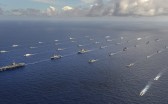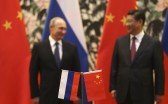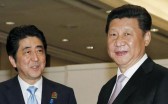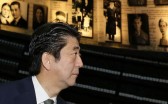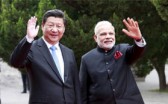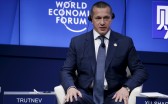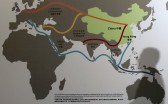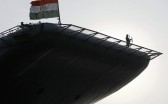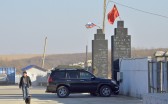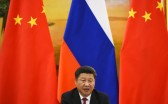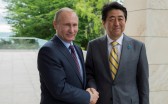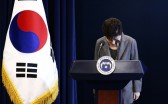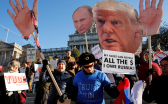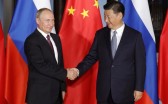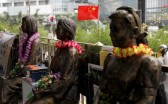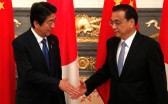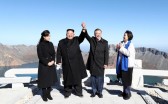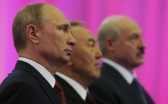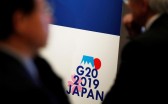In his own words, President Moon Jae-in’s plan “is to make enough progress by the year’s end so the [peace] process cannot be reversed,” such that “there can never be another war on the Korean Peninsula.”1 In reality, of course, peace is never completely irreversible. More reasonably, what Moon likely desires is to create such momentum behind engagement with North Korea that the benefits of continuing far outweigh the cost of returning to hostilities.
Washington remains unconvinced of Kim’s intentions for denuclearization, and so the process has yet to cross this threshold. However, Eun A Jo’s positive scenario in October for the future of inter-Korean relations argues that some of Washington’s frustration stems from the difference between its goals and Seoul’s. While the United States has unyieldingly focused on making progress toward denuclearization, Moon’s first priority is to ensure that the peace process continues. He has positioned himself as a credible intermediary between Washington and Pyongyang, a position from which he must simultaneously deepen engagement with Pyongyang while continuously assuaging Washington’s concerns in order to keep the peace process going. Jo is right that thus far, Moon has adroitly navigated this position. He has steered Trump away from confrontation and brought Kim to the negotiating table.
However, cracks are appearing in his strategy. If Moon wants the peace process to continue, he has three and a half years left in his presidency to convince the United States that engagement with North Korea will continue to be worthwhile. If inter-Korean projects continue to move ahead at full-speed while negotiations between the United States and North Korea stall, Washington may end up unconvinced that the potential costs of engaging with a North Korea seemingly unwilling to denuclearize outweigh the benefits. With the clock ticking, Moon must find a way to help Washington secure satisfactory progress in negotiations soon to ensure that all major stakeholders are sufficiently invested in pursuing the benefits of engagement with North Korea in the long term.
Building irreversible momentum with Washington
The ROK and DPRK have rapidly begun implementing the provisions of the Panmunjom and Pyongyang declarations. In terms of military confidence building measures (CBMs), the two have undertaken demining operations, established a no-fly zone, and demolished 20 guard posts in the DMZ.2 In terms of economic cooperation, South Korea secured a UN sanctions exemption for a joint survey of inter-Korean railways, and began an 18-day survey of the northern portion of the railway on December 1.3 Until recently, Moon continued to maintain that Kim would visit Seoul by the end of the year, and he may still do so in the new year.4 In terms of momentum and progress, all of these measures do make returning to last year’s level of tensions more difficult. It is far more provocative to reinstate a no-fly zone after abolishing it than it would be to expand an already existing one, or for the United States to oppose the inter-Korean railway project once a survey has been completed than before.
Moon knows this, and that is likely part of the reason he is pursuing rapid implementation of these agreements. However, building momentum that is difficult to reverse requires that all relevant stakeholders are convinced that negotiations have real potential for progress. Absent potential for progress on denuclearization, the United States will be less inclined to use its leverage over sanctions enforcement and military operations to support Moon’s agenda.
Other stakeholders like Beijing and Russia have both been fairly supportive of Moon’s approach, particularly in calling for sanctions to be relaxed as a reward for the DPRK’s efforts thus far.5 Washington’s endorsement, however, has been more tenuous. Moon’s efforts have lent enough stability to the situation to allow implementation of military CBMs and economic projects, but most have still been met with resistance from Washington. Secretary of State Mike Pompeo raised concerns about the no-fly zone in a phone call to his counterpart Kang Kyung-wha, and the United Nations Command initially rejected Seoul’s request to survey the inter-Korean railway.6 While the United States tolerated the sanctions exemption for the railway project last month, Marc Knapper, acting deputy assistant secretary for Japan and South Korea at the State Department, confirmed as much when he commented that the sanctions relief needed to actually implement the railway project would not be granted “absent the real progress on denuclearization” at a forum in Seoul.7
On borrowed time?
Washington is not only increasingly at odds with Seoul but seems to have reached an impasse in negotiations with Pyongyang. While the ROK and DPRK have implemented numerous aspects of their agreements and continued robust contact, US Special Representative for North Korea Stephen Biegun has yet to engage in working level talks with North Korea.8 Lower-level US officials have regular contact with North Korean counterparts, but the substance of those discussions is unclear.9 Whatever the case, the administration seems keen to put a band-aid on this problem with another Trump-Kim summit, a move which will likely reinforce the North Korean preference of dealing with the United States at the highest levels of government rather than engaging in constructive working level discussions. It is in these discussions, rather than high-level summits, that officials can discuss at length critical issues that must be resolved for tangible progress to be made, such as the definition and sequencing of denuclearization, sanctions relief, the contours of potential security guarantees, and more.
As US-DPRK relations continue to stall, Moon is gambling with his approach. On the one hand, continuing to rapidly implement inter-Korean agreements and pushing for further summits may create momentum in negotiations that Washington is unwilling to upend. On the other, it may isolate Washington from the process and undermine US support for Moon’s agenda. In a situation where Washington is less and less aligned with Seoul and unable to meaningfully engage North Korea, trust in the process will degrade. Washington is fully aware that negotiating denuclearization will take time and seems to be adjusting expectations accordingly—after the Singapore summit, Pompeo said that the bulk of denuclearization could be completed by the end of Trump’s first term, but now he contends that they will not be “forced into artificial time frames.”10 But with inter-Korean rapprochement far outpacing progress on the United States’ core issues of concern, Washington may reach a point that the costs of continuing to engage with North Korea outweigh the benefits. Continuing to support a peace process that increases engagement with North Korea—or even potentially normalizes US-DPRK relations—without what Washington considers to be substantial progress toward final, fully verifiable denuclearization may become too much for the United States to swallow.
Domestic challenges on the horizon
Moon has just three and a half years left of his single-term presidency to achieve indelible progress on an intractable problem. Once out of office, there is no guarantee that a new president—particularly if conservative—will favor Moon’s approach. The conservative opposition remains immobilized in the wake of former president Park Geun-hye’s impeachment, but with Moon’s popularity tanking and three and a half years left to regroup, the conservatives may still be able to present a credible challenge in the 2022 presidential election. Moon has failed to engage with or win the opposition parties’ support for his inter-Korean agenda, and a future conservative government is unlikely to support the continuation of Moon’s policies. There is even potential for his policies to be reversed, as former progressive president Roh Moo-hyun’s Sunshine Policy was when conservative president Lee Myung-bak came to power.
As if the timeline was not difficult enough, Moon’s waning popularity at home will make implementing his policies more and more difficult over the remainder of his presidency. Both Gallup and Realmeter polls have shown his presidential approval drop below 50 percent this month for the first time since he took office—a decline of more than 40 percentage points since his inauguration.11 His North Korea policy remains decently popular, though not nearly as popular as in the immediate aftermath of each inter-Korean summit. In contrast, nearly fifty percent of those who disapprove of Moon’s presidency cite his economic policies as the reason, and that number is on the rise.12 This dynamic is likely to get worse as inter-Korean projects continue to be implemented. Amid dismal job creation and unwaveringly high unemployment, the Ministry of Unification announced that South Korea’s budget for inter-Korean projects would exceed 1 trillion won ($890.7 million) in 2019, a 15 percent increase from last year. Absent real improvement in the economy, voters’ support for inter-Korean projects is likely to decline as they become more expensive.
A way forward
For his domestic audience, Moon needs to focus his efforts on improving the economy. But for the United States, Moon must find a way to demonstrate credibly what he believes to be true – that North Korea is genuinely committed to denuclearization. To this end, Moon’s most immediate priority should be efforts to help establish Biegun as a credible envoy in the eyes of North Korea. Even absent concrete progress on denuclearization, a breakthrough in access to North Korean officials through working level talks with the special envoy would boost momentum in the eyes of the United States. Unfortunately, this will be a difficult message for Moon to communicate to the North when the potential for a second summit with Trump remains. In order to ensure North Korea does not simply continue to hold out for summits with Trump, the United States should prepare for the second Trump-Kim summit contingent on North Korea’s appointment of a counterpart for Biegun and the opening of talks between the envoys.
This would be a valuable step forward in the short-term, but North Korea policy in South Korea faces a broader structural challenge that Moon will need to mitigate in the long-term in order for his agenda to succeed. To decrease the chances of his agenda’s reversal, Moon must encourage the National Assembly to lead the way for constitutional revision. As it stands, South Korea’s constitution vests considerable power in the presidency – so much so that it is often referred to as an “imperial presidency.”13 Presidents largely have the freedom to govern carte blanche, and for this reason, North Korea policy has always been a top-heavy process with minimal input from the National Assembly.
The debate over constitutional revision has been ongoing since South Korea’s democratization, and most recommendations focus on dispersing presidential power and decentralizing the government. In addition to creating substantial checks and balances on presidential power, Moon’s governing Democratic Party has proposed a four-year, two-term presidency that would require the president to think more about his constituents as he considers reelection. Opposition parties including the Liberty Korea Party have proposed a semi-presidential system with power divided between a president and a prime minister.14
Absent constitutional revision, inter-Korean policy will remain a top-heavy process that new administrations are eager to overturn in order to make their mark. With a two-term presidency (which Moon would not be able to take advantage of, but his successor could), North Korea policy could have more continuity. Proposed revisions to create checks and balances would also facilitate more inclusive North Korea policy with a National Assembly more vested in the outcomes. The president has paid little attention to the issue after his bill on constitutional revision was boycotted by the opposition parties in April, but he must renew collaboration with the National Assembly to construct an inclusive reform bill in order to give his North Korea agenda the best chance for success even after his term. While constitutional revision and working-level talks are not enough in and of themselves to create irreversible peace, they may be enough to create much needed momentum in the short term and stability in the long term.
1. “Moon says is seeking to establish ‘irreversible’ peace on the Korean Peninsula,” Yonhap News Agency, September 7, 2018, https://en.yna.co.kr/view/AEN20180907001200315
2. Dagyum Ji, “UN sanctions committee allows Seoul to resupply Northern military hotline,” NK News, November 30, 2018, https://www.nknews.org/2018/11/un-sanctions-committee-allows-seoul-to-resupply-northern-military-hotline/
3. Ankit Panda, “Inter-Korean Rail Survey Begins, Ahead of Expected Fourth Kim-Moon Summit,” The Diplomat, December 1, 2018, https://thediplomat.com/2018/12/inter-korean-rail-survey-begins-ahead-of-expected-fourth-kim-moon-summit-in-seoul/
4. Choe Sang-Hun, “Will Kim Jong-un Visit Seoul This Month? South Korea Is Holding Its Breath,” The New York Times, December 10, 2018, https://www.nytimes.com/2018/12/10/world/asia/kim-jong-un-visit-seoul.html
5. Julian Borger “China and Russia call on UN to ease North Korea sanctions,” The Guardian, September 27, 2018, https://www.theguardian.com/world/2018/sep/27/un-security-council-north-korea-sanctions-china-russia-pompeo
6. Hyonhee Shin, “U.S. opposed to Koreas’ plan for no-fly zone over border: sources,” Reuters, October 18, 2018, https://www.reuters.com/article/us-northkorea-usa-sourthkorea/u-s-opposed-to-koreas-plan-for-no-fly-zone-over-border-sources-idUSKCN1MS0OR; and
Benjamin Haas, “Train project liking North and South Korea stopped in its tracks by US,” The Guardian, August 31, 2018, https://www.theguartdian.com/world/2018/aug/31/north-south-korea-train-project-halted-us
7. Ankit Panda, “Inter-Korean Rail Survey Begins.”
8. Nick Wadhams, “Pompeo’s North Korea Envoy Can’t Get Face Time with Counterparts,” Bloomberg, December 7, 2018, https://www.bloomberg.com/news/articles/2018-12-07/pompeo-s-north-korea-envoy-can-t-get-face-time-with-counterparts
9. Ibid.
10.
11. “한국갤럽 데일리 오피니언 [Gallup Korea Daily Opinion],” Gallup Korea, December 7, 2018, https://panel.gallup.co.kr/Contents/GallupKoreaDaily/GallupKoreaDailyOpinion_334(20181207).pdf; and Lee Sung-eun and Kwon Ho, “Moon’s approval falls below 50% for 1st time,” Korea Joongang Daily, November 30, 2018, http://koreajoongangdaily.joins.com/news/article/article.aspx?aid=3056300
12. Gallup Korea Daily Opinion.
13. Seonhwa Kim, “Reforming South Korea’s ‘Imperial Presidency,’” Institute for Security & Development Policy, October, 2017, http://isdp.eu/publication/reforming-south-koreas-imperial-presidency/
14. Hyung-A Kim, “The Roadblocks to Reform in South Korea,” Asian Studies Association of Australia, April 18, 2018.
